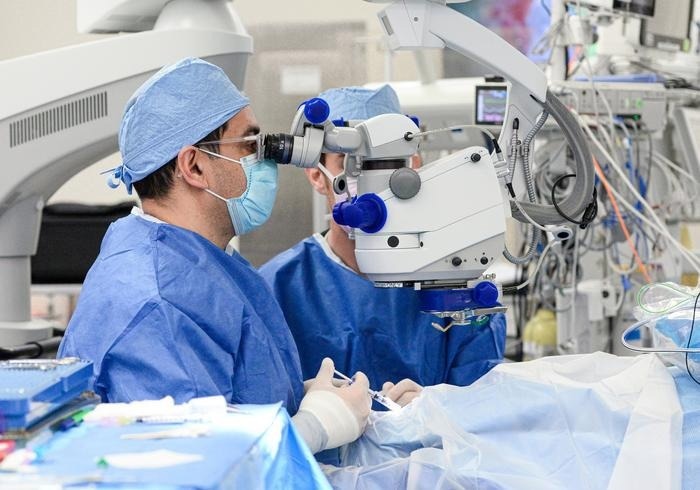A group of scientists mapped over 6,000 proteins found in various cell types within the eye using a few drops of eye fluid taken through surgery. Researchers reported that a proteomic clock with an AI model is designed to predict a fit person’s age based on their protein profile. The study was published in the journal Cell on October 19, 2023.
 Photo of the surgeon. Image Credit: John Barreto
Photo of the surgeon. Image Credit: John Barreto
Accelerated aging within specific cell types is linked to diseases like diabetic retinopathy, uveitis and Parkinson’s disease.
What's amazing about the eye is we can look inside and see diseases happening in real time. Our primary focus was to connect those anatomical changes to what’s happening at the molecular level inside the eyes of our patients.”
Vinit Mahajan, Surgeon and Professor, Ophthalmology, Stanford University
It is tough to take a sample from the eye of a live patient as it is similar to the brain, which is non-regenerative and can cause permanent damage. An alternative approach involves liquid biopsies, which are samples of fluids collected from the vicinity of the cells or tissues under investigation.
While liquid biopsies can offer insights into the proteins in the targeted region, their capacity to measure a wide array of proteins within small fluid volumes has been restricted. Additionally, they do not provide information about which cells generated specific proteins, which is crucial for disease diagnosis and treatment.
Mahajan’s group—to map protein production by different types of cells within the eye—employed a high-resolution technique to characterize proteins in 120 liquid biopsies collected from the aqueous or vitreous humor of patients undergoing eye surgery.
The team found 5,953 proteins—10 times the number of proteins characterized earlier in similar studies. The investigators traced each protein to particular cell types using a software tool (TEMPO) they created.
AI machine learning model built by researchers predicted the molecular age of healthy eyes accurately based on a subset of 26 proteins. This model also predicted which type of disease is related to particular molecular aging.
The degree of aging increased with the development of the disease and faster by 30 years for individuals with proliferative diabetic retinopathy. The tool also predicts the signs of aging before the clinical symptoms of the original disease occur and is treated in advance.
The researchers also detected various proteins related to Parkinson’s disease. Parkinson’s diagnoses are difficult as the proteins are usually recognized postmortem and current diagnostic methods are not proficient in testing for them. Earlier diagnosis of Parkinson’s disease is possible by screening the markers in eye fluid and later therapeutic monitoring.
The authors say from the findings that aging may be organ or cell-specific, which could lead to advances in precision medicine and clinical trial design.
These findings demonstrate that our organs are aging at different rates. The use of targeted anti-aging drugs could be the next step in preventative, precision medicine.”
Julian Wolf, Study Author and Ophthalmologist, Stanford University
Mahajan says, “If we're going to use molecular therapies, we should be characterizing the molecules in our patients”. He also adds, “I think reclassifying patients based on their molecular patterns and which cells are being affected can really improve clinical trials, drug selection, and drug outcomes.”
The researchers ensured to illustrate the samples from a large number of patients with a wide range of eye diseases. They also added that this could be used to illustrate the other difficult-to-sample tissues. For instance, liquid biopsies of cerebrospinal fluid could be used to study or diagnose the brain, synovial fluid could be used to study joints, and urine could be used to study the kidneys.
Source:
Journal reference:
Wolf, J., et al. (2023). Liquid-biopsy proteomics combined with AI identifies cellular drivers of eye aging and disease in vivo. Cell. doi.org/10.1016/j.cell.2023.09.012.